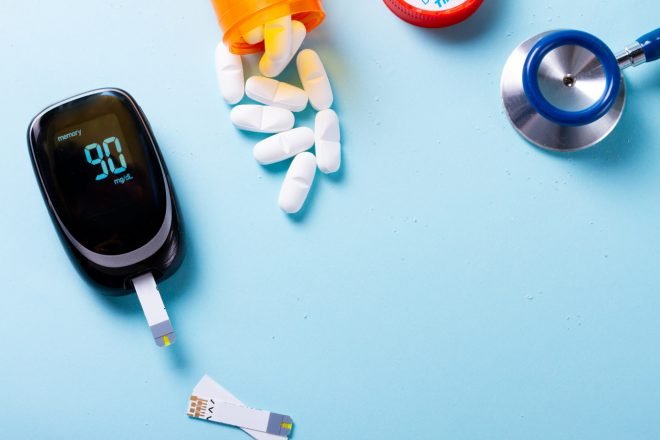Advertisment
Tizepatide shows efficacy and safety in diabetes treatment

Article by Bruce Sylvester.
Investigative tirzepatide appears to improve glycaemic control and bodyweight in Type 2 diabetes patients, without raising the risk of hypoglycemia.
Researchers reported these findings on June 26, 2021 in The Lancet.
As background to the phase 3 study, the authors noted, “Analogues of the incretin GLP-1 have helped to transform the face of type 2 diabetes treatment, combining effective reductions in glycaemia with clinically useful weight loss. More importantly, GLP-1 analogues are proven to reduce mortality, the risk of cardiovascular events, and progression of diabetic kidney disease. However, the achievable doses and efficacy of GLP-1 analogues can be limited by their adverse effects, mainly gastrointestinal in nature, such as nausea, vomiting, gastro-oesophageal reflux, and alterations in bowel habit. In the search for the next step beyond GLP-1, researchers have explored suitable companion treatments to obtain enhanced efficacy.”
Tirzepatide is a dual agonist of GLP-1 and GIP receptors.
The researchers conducted a 40-week, double-blind, randomized, placebo-controlled, and international phase 3 trial (SURPASS-1).
They enrolled adult subjects (≥18 years) diagnosed with type 2 diabetes inadequately controlled by diet and exercise alone, and who were naive to injectable diabetes therapy.
From June 3, 2019, to Oct 28, 2020, they enrolled 478 subjects with a mean baseline HbA1c of 7.9% and a mean age of 54 years. There were 231 (48%) female subjects. Mean diabetes duration was 4.7 years, and mean body-mass index was 31.9 kg/m2..
The subjects were randomized to once-weekly injections of tirzepatide 5 mg (n=121), tirzepatide 10 mg (n=121), tirzepatide 15 mg (n=121) or placebo (n=124).
The primary endpoint was mean change in glycated hemoglobin (HbA1c) at 40 weeks from baseline.
Subjects on each dose of tirzepatide achieved superior reductions in glycated hemoglobin (HbA1c) when compared to placebo. Estimated mean treatment differences versus placebo were −1.91% with tirzepatide 5 mg, −1.93% with tirzepatide 10 mg and −2.11% with tirzepatide 15 mg, a statistically significant for all doses (p<0·0001).
Notably, among subjects on the 15 mg dose of tirzepatide, 52% achieved an HbA1c target of less than 5.7%. And 86% achieved an HbA1c of 6.5% or less without any clinically significant hypoglycemia.
Tirzepatide treatment induced a dose-dependent bodyweight loss from 7.0 to 9.5 kg.
Most common adverse events were gastrointestinal and dose-dependent, including mild to moderate nausea (18% in the group receiving 15 mg), diarrhea (12% in the group receiving 15 mg), and vomiting (6% in the group receiving 15 mg).
The authors concluded, “Tirzepatide showed robust improvements in glycaemic control and bodyweight, without increased risk of hypoglycaemia. The safety profile was consistent with GLP-1 receptor agonists, indicating a potential monotherapy use of tirzepatide for type 2 diabetes treatment.”





